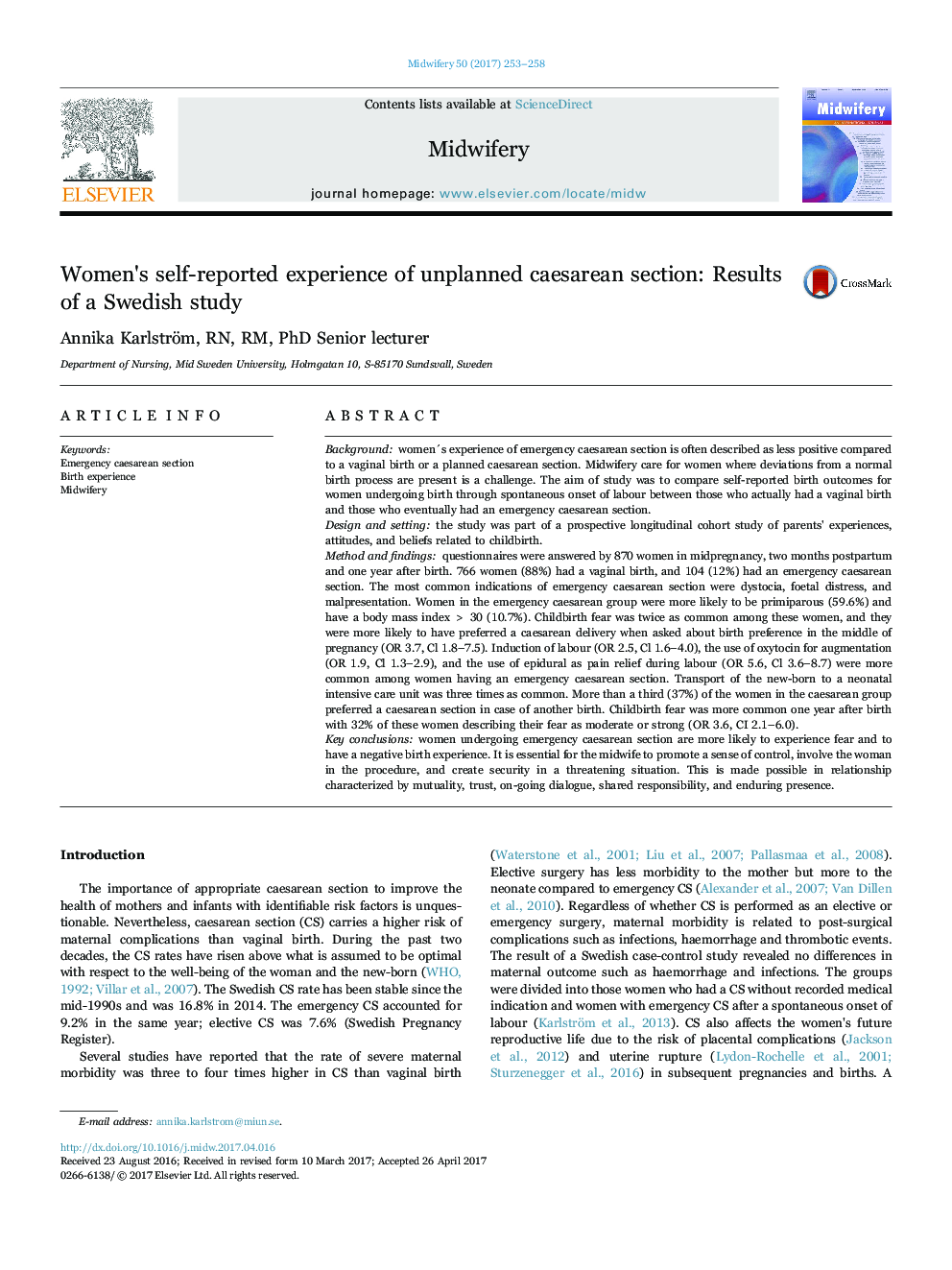| کد مقاله | کد نشریه | سال انتشار | مقاله انگلیسی | نسخه تمام متن |
|---|---|---|---|---|
| 5122377 | 1487134 | 2017 | 6 صفحه PDF | دانلود رایگان |
- Women undergoing emergency caesarean section are more likely to experience fear during pregnancy.
- Emergency caesarean section is often preceded by obstetric interventions.
- A negative birth experience is more common among women undergoing emergency caesarean section.
Backgroundwomen´s experience of emergency caesarean section is often described as less positive compared to a vaginal birth or a planned caesarean section. Midwifery care for women where deviations from a normal birth process are present is a challenge. The aim of study was to compare self-reported birth outcomes for women undergoing birth through spontaneous onset of labour between those who actually had a vaginal birth and those who eventually had an emergency caesarean section.Design and settingthe study was part of a prospective longitudinal cohort study of parents' experiences, attitudes, and beliefs related to childbirth.Method and findingsquestionnaires were answered by 870 women in midpregnancy, two months postpartum and one year after birth. 766 women (88%) had a vaginal birth, and 104 (12%) had an emergency caesarean section. The most common indications of emergency caesarean section were dystocia, foetal distress, and malpresentation. Women in the emergency caesarean group were more likely to be primiparous (59.6%) and have a body mass index > 30 (10.7%). Childbirth fear was twice as common among these women, and they were more likely to have preferred a caesarean delivery when asked about birth preference in the middle of pregnancy (OR 3.7, Cl 1.8-7.5). Induction of labour (OR 2.5, Cl 1.6-4.0), the use of oxytocin for augmentation (OR 1.9, Cl 1.3-2.9), and the use of epidural as pain relief during labour (OR 5.6, Cl 3.6-8.7) were more common among women having an emergency caesarean section. Transport of the new-born to a neonatal intensive care unit was three times as common. More than a third (37%) of the women in the caesarean group preferred a caesarean section in case of another birth. Childbirth fear was more common one year after birth with 32% of these women describing their fear as moderate or strong (OR 3.6, CI 2.1-6.0).Key conclusionswomen undergoing emergency caesarean section are more likely to experience fear and to have a negative birth experience. It is essential for the midwife to promote a sense of control, involve the woman in the procedure, and create security in a threatening situation. This is made possible in relationship characterized by mutuality, trust, on-going dialogue, shared responsibility, and enduring presence.
Journal: Midwifery - Volume 50, July 2017, Pages 253-258
